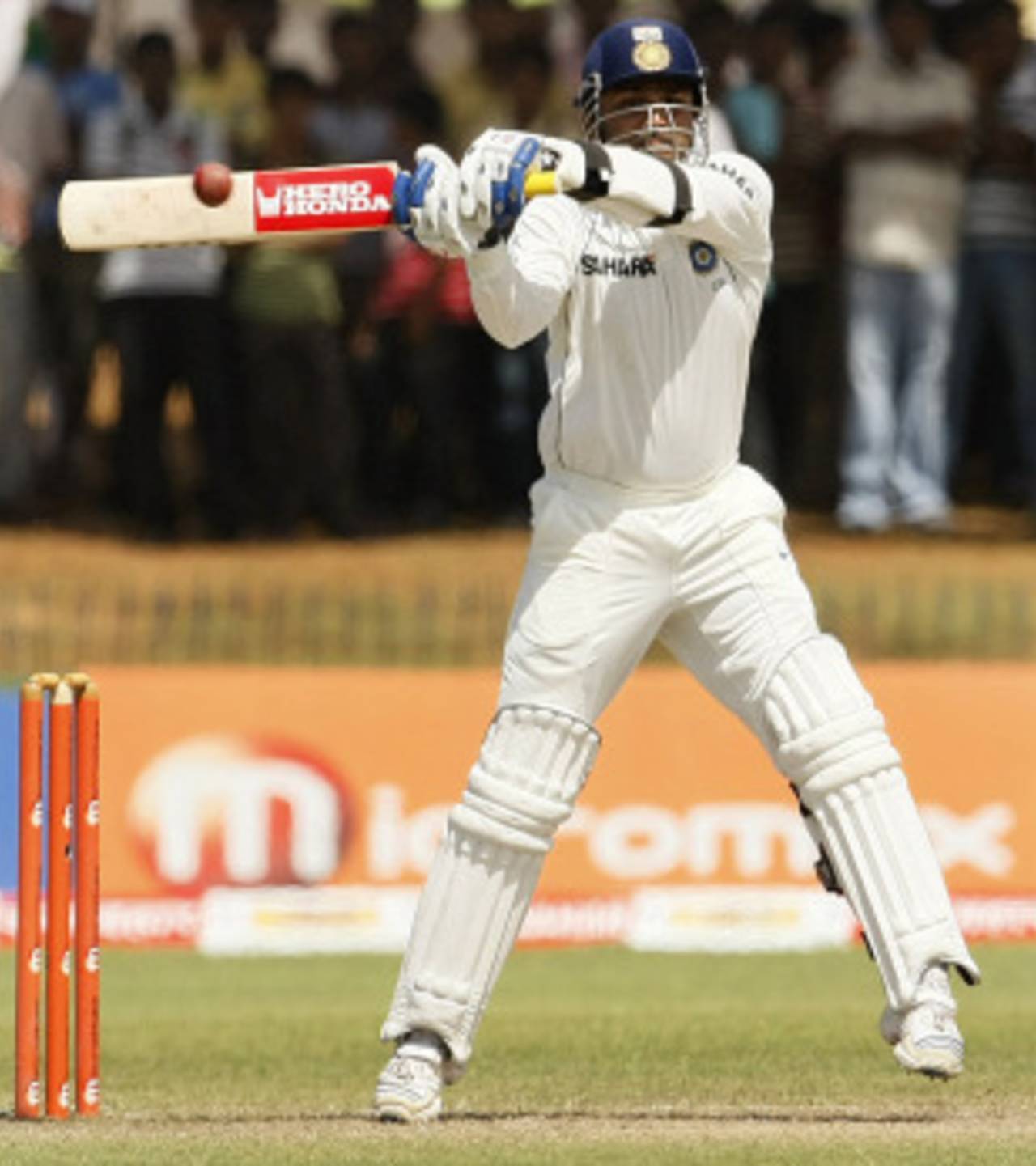Virender Sehwag doesn't like negative bowling. He gets irritated, he loses patience. The thing is, opposition captains know it, which is why it ceases to be negative bowling. Third man and sweeper-cover become catching positions, wide deliveries outside off are wicket-taking ones. And when he gets out that way, it is forgotten how well he played until then.
It happened in
Nagpur before Dale Steyn demolished India. A similar collapse followed here in Galle. Of course it doesn't absolve others of their share of blame, but Sehwag would be the one kicking himself the most. Then again, knowing Sehwag, whose biggest strength is to stop thinking of a bad shot or a good ball as soon as it has happened, maybe not.
Nagpur isn't the only example, but the similarities are palpable. His scores in the respective matches, just to drive home the point, were identical - 109. Then he had played a beautifully lone hand, 109 out of the 192 that came while he was at the crease. That century, despite his strike-rate of 78.41, was a watchful innings.
In his first over of a new spell, Wayne Parnell bowled full and wide outside off, with three men on the off-side boundary. Sehwag hit through those three men for two fours, one was a wide that went for four. Still he couldn't hold himself, chasing a delivery that was too wide of him, and sliced it to sweeper-cover.
In Galle, Sehwag was again the lone hand, batting watchfully but still quick, scoring 109 out of 169. During the course of his innings, a healthy part of which was played in the dying hours of the third day, his back trouble threatened to reappear, Lasith Malinga aimed for his toes and ribs, and Muttiah Muralitharan bowled menacing offbreaks and doosras.
Yorkers he kept out, bouncers he kept down, doosras he read well, any slight error from either of the bowlers he smacked for fours. He also resisted his own theory that when the teams are trying to attack in the final few minutes of the day, it is the best time to get 30 quick runs.
On the fourth morning he started as if he had never stopped. Another left-arm bowler, Chanaka Welegedara, started bowling innocuously wide outside off with three men patrolling the boundary. Sehwag still beat them. He reached his century with hardly any fuss at all. Welegedara changed ends. Third man, deep point and sweeper-cover waited. He bowled a no-ball, then a wide, and was cut along the ground for one.
In the next over, Sehwag played a lovely push-drive through extra cover, off Malinga who attacked much more conventionally. It was the bowler attacking him by not attacking him, though, who was playing on Sehwag's psyche, annoying him, irritating him. Off the second ball of the next over by Welegedara, Kumar Sangakkara joined other captains who have got Sehwag out this way. It was short, it was wide, in fact it would have been called a wide had Sehwag not tried to hit over deep point. The ball tailed away, hit the toe end of the bat and settled at slip. Another collapse followed.
Over the last few years, Sehwag has eliminated many weaknesses from his batting. The short ball into the ribs doesn't bother him now. He is not so loose outside off anymore. This most innocuous of weaknesses, though, stays. In Napier in 2008-09, he fell twice to spinners bowling with defensive fields in their early overs.
Most of the bowlers in the world say you cannot wait for Sehwag to make mistakes, for by the time he does make a mistake it is often too late. But as soon as he starts making a mockery out of the aggressive fields, they fall back, waiting for, well, a mistake. They do so because Sehwag does make those errors when he has all the bowlers at his mercy.
In
Mumbai last year against these opponents, even in the first session of India's batting, Murali started off with deep fields. Sehwag went over extra cover, he reverse-swept, he cleared the deep fielders, and he thus gave India enough time to force a win. In Galle, though, with India 351 behind and a day lost to rain, it wasn't as if India could win the match through quick runs.
Still, though Sehwag left the job unfinished, his shot doesn't explain Rahul Dravid's running, Sachin Tendulkar's error of judgement, VVS Laxman's limp hook, or Harbhajan Singh's waft in the last over before lunch. They will all soon get a second chance. And if Sehwag gets off to a start, Sri Lanka will bowl with similar "attacking" fields. It will be interesting to see how Sehwag responds.
This piece was published at the innings break
Sidharth Monga is a staff writer at Cricinfo
